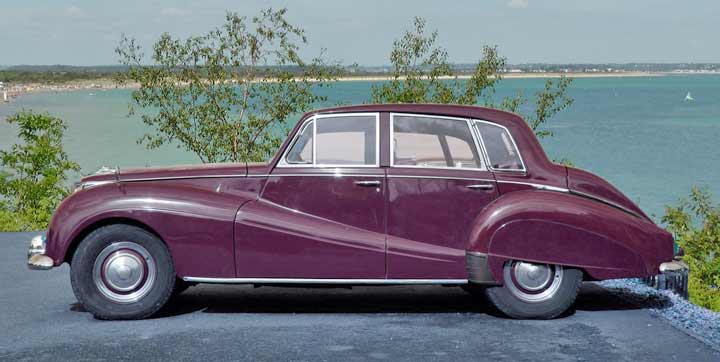Armstrong Siddeley Saphire

Should a car manufacturer be worried that the engine on their car was perhaps too powerful? The directors of Armstrong Siddeley were, when they brought out their Sapphire 346, which was first launched at the London Motor Show in 1952.
The company was proud of its reputation as a manufacturer of cars for, shall we say, the upper reaches of society. They were not for the common man. They were driven by company chairmen, senior politicians, elderly aristocrats, gang bosses. These people were not boy racers.
So, reasoned Armstrong Siddeley's directors, how would they take to a car which could top a hundred mph, and go from a standing start to 60mph in 13 seconds?
As a senior executive put it, sniffily: the typically high-class owner of one of these cars would be less interested in pure performance than the average person, and it may therefore have an adverse effect on sales unless the engine's power was deliberately downgraded.
And this really was some engine. Conceived by no less than WO Bentley, it was a straight six cylinder 3.4 litre twin cam engine which produced 125 brake horsepower; adding optional twin carburettors could push that to 150 brake horsepower.
More sensible heads realised however that a big heavy car needs a powerful engine to propel it, so the engine was kept in. In fact an even bigger four litre engine was introduced in 1955 in the Star Sapphire.
This was no modern supercar though. It started off as a full five seater saloon car, with a limousine version introduced later. The finish was superb, with the interior in understated wood and leather. Comfort was of course reserved for the passengers, who could never do anything so vulgar as drive a car themselves; so there was a choice of either two seats or a bench at the front.
In appearance it was stately, somewhat old-fashioned, and reeking of pure prestige. The front doors were rear hinged, as they were prewar; the fact that these were much more dangerous for the chauffeur and assistant was not considered to be sufficiently important for them to be changed.
On the face of it, such old-fashioned attitudes by a car manufacturer should have resulted in it's early demise. The opposite was in fact the case, with more than 8500 of these expensive cars sold altogether.
However, the company attempted to break into the mainstream car market and found that their ideas simply didn't wash with people who were not used to being chauffeured around. In 1960 car manufacture ended permanently, whilst the company concentrated their efforts on the aircraft industry. They were absorbed by Rolls-Royce in 1967.